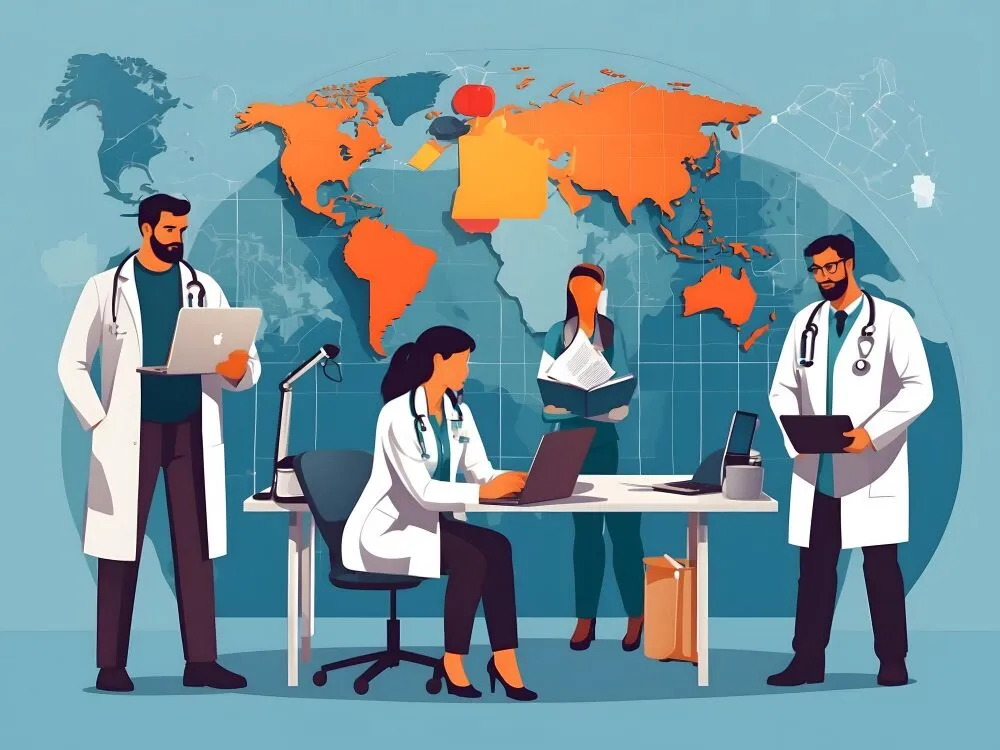Life as a Medical Student: A Journey of Challenges and Learning Success

Being a medical student combines challenging studies, intense training, and personal growth. Understanding the experiences of medical students helps us appreciate the responsibilities and rewards of a career in medicine. This paper explores the journey medical students take, from their decision to become doctors to their residency training.

Choosing the Medical Path Early Influences and Inspirations:
Many medical students trace their interest in medicine to early inspirations, like family members in healthcare or personal experiences with illness. These moments often spark a lifelong desire to help others.
The Decision Process
Choosing a career in medicine is not an easy decision. Future students consider the length of training, financial costs, and their dedication to patient care.
Preparing for Medical School MCAT Preparation
For aspiring doctors, the Medical College Admission Test (MCAT) is a crucial step. Achieving a good score requires months of preparation, practice tests, and studying subjects like biology, chemistry, and physics.

The Application Process
Applying to medical school involves submitting personal statements, recommendation letters, and transcripts. This process is highly competitive and requires candidates to highlight both their academic achievements and personal qualities.
Interviews and Acceptance
Interviews are an important part of the application process, allowing schools to assess candidates’ communication skills and suitability for medicine. Receiving an acceptance letter is a major milestone, marking the start of a challenging but rewarding journey.
First Year: Adapting to Medical School Orientation and Initial Challenges
The first year of medical school can be overwhelming. Orientation helps students adjust, but the sheer volume and complexity of the material present significant challenges.
Balancing Personal Life and Academics
First-year students often struggle to balance their demanding studies with personal life. Time management and self-care are essential skills for maintaining overall well-being.

Second Year: Deepening Knowledge Advanced Studies and Courses
The second year involves more rigorous coursework, focusing on subjects like pathophysiology and pharmacology. Students spend long hours in labs, seminars, and study groups to master the material.
Building Clinical Skills
In addition to their academic work, second-year students begin developing clinical skills. This includes learning how to take patient histories, perform physical exams, and understand diagnostic techniques.
Third and Fourth Years: Clinical Training Transition from Classroom to Hospital
The third year marks the shift from classroom learning to hands-on experience in hospitals. Students apply their knowledge in real-world settings, learning directly from experienced doctors.
Rotations and Specialties
During clinical rotations, students explore different specialties such as surgery, internal medicine, and pediatrics. These experiences help them discover their career interests.
Patient Interaction
A key part of clinical training is interacting with patients. Students learn to communicate effectively, show empathy, and handle the challenges of patient care.
Managing Stress and Well-Being Common Stressors for Medical Students
Medical students face many stressors, including emotional demands, long hours, and academic pressure. These challenges can affect their mental health.
Coping Strategies
Effective coping strategies include exercise, mindfulness, and seeking support from peers or counselors. Many medical schools offer resources to help students manage stress and maintain mental health.
Extracurricular Activities and Research The Importance of Participation
Extracurricular activities and research enhance the medical school experience. These opportunities support both personal and professional growth.
Research and Volunteering
Many medical students participate in research or volunteer in their communities. These experiences help them better understand medical science and community health.
Building Professional Networks The Value of Networking in Medicine
Building a professional network is crucial for medical students. Networking provides access to mentors, insights, and future opportunities.
Tips for Strong Networking
Successful networking involves attending conferences, joining medical organizations, and seeking advice from experienced professionals. Maintaining relationships requires regular communication and genuine interest.
Preparing for Residency The Residency Match Program
The residency match process is a critical step in a medical student’s career. Students rank their preferred programs, attend interviews, and apply to residency programs.
Ranking Programs and Interviews
Residency interviews help students determine which programs are a good fit. Afterward, students rank their choices, and a matching system pairs them with residency programs.
Work-Life Balance Challenges of Maintaining Balance
Achieving work-life balance can be tough for medical students. The demands of medical school often cut into personal time, making it difficult to find balance.
Strategies for a Healthy Lifestyle
Setting boundaries, prioritizing self-care, and finding hobbies or activities that bring joy can help students maintain balance.
Financial Considerations Tuition and Living Costs
Medical school requires a significant financial investment. Students must budget for tuition, living expenses, and books, which can result in substantial debt.
Managing Debt and Loans
Effective financial management involves creating a budget, applying for scholarships, and understanding loan repayment options. Planning for future earnings and expenses is crucial for financial stability.
Technology in Medical Education The Role of Technology in Learning
Technology plays a major role in modern medical education. Online courses, digital resources, and simulation tools enhance learning and offer flexible study options.
Useful Tools for Medical Students
Medical students benefit from a variety of technological tools, such as virtual anatomy labs, electronic textbooks, and medical apps. These resources support both their education and clinical practice.
The Role of Mentors Finding and Working with Mentors
Mentorship is central to medical education. Choosing the right mentor means finding experienced professionals who can offer guidance, support, and career advice.
The Impact of Mentorship
Mentors help students navigate challenges, provide valuable insights, and create opportunities for career advancement. Their guidance can significantly shape a medical student’s professional path.




